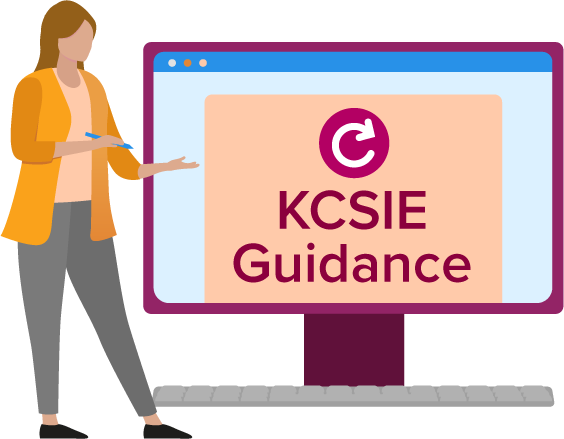The new version of the Keeping Children Safe in Education (KCSIE) statutory guidance has been in force for a couple of months. We’ve put together the following summary of the key changes so you can be sure you are up to date.
This isn’t an exhaustive list, and it’s still important for you to read through the guidance yourself and keep track of any changes, but here we’ll provide you an at-a-glance overview that you can refer back to over the year.
Part one: safeguarding information for all staff
Some of the key changes in this section are:
| ‘Child-on-child abuse’ | This term has now replaced ‘peer-on-peer abuse’ when talking about sexual harassment or violence between children. CPOMS users can change the category to reflect this change. |
| ‘Sexual violence and sexual harassment between children in schools and colleges’ document | This document has been merged with the new KCSIE document. It’s now become part of the statutory guidance for all staff. |
| Domestic abuse | This has now been added to the list of safeguarding issues that all staff should be aware of. Staff can add domestic abuse and/or its sub-categories to the list of categories on CPOMS. |
| Speaking to an adult | The guidance now explains that children may not know how to tell someone that they’re being abused. |
Part two: management of safeguarding
Some of the key changes in this section are:
| Child protection training | Governors and trustees must receive appropriate child protection training at induction. CPOMS users can change the category to reflect this change. |
| Equality Act 2010 | Should be incorporated into school safeguarding. Schools must not discriminate against pupils because of their protected characteristics and must work to combat their disadvantages. |
| Designated safeguarding lead responsibilities | Condensed and collated in Annex C, encouraging relevant parties to read through |
| Online filters and monitoring systems | Governing bodies must regularly review and ensure all staff are aware of the systems in place. They should also communicate these measures to parents. CPOMS StaffSafe allows governing bodies to record the frequency of these reviews. |
| LGBT children | Guidance now emphasises the importance of providing pupils with a safe space to talk about issues. Support staff for LGBT students can use CPOMS to be alerted about safeguarding concerns for just LGBT students/issues. |
| Low-level concerns policy | Should contain a clear procedure for confidentially sharing concerns. CPOMS StaffSafe allows for customisation of who is alerted about staff low level concerns (either the DSL, headteacher or both). |
Part three: safer recruitment
Some of the key changes in this section are:
| Recruitment information | Emphasis on the fact that CVs alone cannot provide all the necessary safe recruitment information. CPOMS StaffSafe can be used to record your governor and trustees’ details, training dates, safeguarding training and any other courses attended. It will alert you when training needs updating/refreshing. |
| Online searches | Schools should begin to add online searches to their recruitment process as part of their due diligence. Schools can add the category ‘online searches’ of staff into CPOMS StaffSafe. |
Part four: safeguarding concerns or allegations made about staff, including supply teachers, volunteers, and contractors
Some of the key changes in this section are:
| Learning opportunities | Management should consider all cases and allegations as learning opportunities, whether substantiated or not. |
| Low-level concerns | The school or college should create clear processes for low-level concerns. |
How CPOMS can help
These extensive updates to the KCSIE guidance could feel daunting. However, at CPOMS, we’re here to help. We know that safeguarding children is everyone’s business. You can only gain a full picture of a student’s wellbeing when all incidents are recorded.
Keeping all this data in one centralised, streamlined system such as CPOMS can help you to bring all the pieces of the puzzle together, allowing for more effective, targeted interventions.
To find out more about how CPOMS can help, get in touch with the team today.




